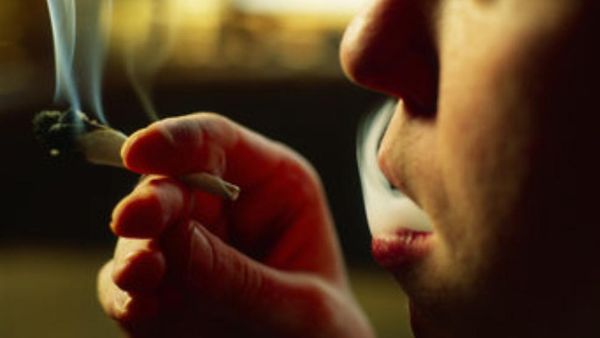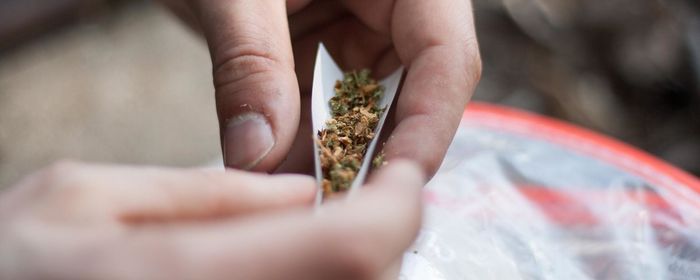- Do we make good use of cannabis? Where is the line between use and abuse? Cannabis is not an innocuous substance, it has an impact on the organism, which can be positive or negative depending on the circumstances. The amount, the frequency and the type of use are key factors that condition the effect it has on us. This chapter of the Dinafem Guide to Risk Reduction will focus on the parameters that draw the line between use and abuse.

In the last decades and as a direct result of the illegal status of marijuana, we have witnessed a fierce battle between its advocates and opponents, who provide biased information either demonizing the plant or defending its innocuousness and benefits. We need to understand that cannabis is a substance that interacts with our body and mind – an interaction that is not without consequences – and the only way to do so is through reliable, fact-based information.
Delimiting cannabis consumption
Drawing the thin line that separates cannabis use and abuse is not an easy task, as to properly analyse the hazards associated with the use of any drug, a number of factors need to be considered: the user’s sociocultural and economic and political context, his lifestyle and physical and emotional condition, the availability of the substance and the route of administration. Where is the limit between cannabis use and abuse? The answer is something each user will have to learn to asses. Recognizing when use becomes abuse could be the first step to changing some dynamics and to adopting responsible consumption habits.
In the case of cannabis, particularly significant factors are the type of use, the frequency and the dose. In fact, a number of studies have proved that the effects on the human body vary dramatically with occasional and chronic use. This is due to the bimodality of cannabinoids, whose effects can be completely opposite depending on the dose.
What is cannabis use?
We talk of use when it has virtually no negative impact on the user or on society. Consumption tends to be moderate, occasional and safe, fulfilling the user’s needs. That said, and as we have mentioned above, establishing frequency and dose parameters is not easy, it is a highly relative concept that depends on the circumstances of each user.
What is cannabis misuse?
Drug misuse is defined as the self-administration of a substance for a purpose other than the socially or medically accepted and that can lead to physical dependence upon prolonged use. As complement to the definition, excess cannabis consumption (in terms of quantity or frequency) that results in negative consequences for the user or their environment can be regarded as misuse too.
There are different patterns of cannabis misuse:
1-Misuse related to quantity and/or frequency
It is associated to compulsive patterns of use, that is a regular protracted use characterised by a high frequency and dose. In most cases:
-It is disproportionate, occurring even in situations where logic dictates otherwise: respiratory problems, unfavourable legal context, etc.
-The substance becomes a need. It stops being just a tool and becomes a physical or psychological need that alters the user’s behaviour and personality, influencing even certain social behaviours, i.e. “I can’t travel to a country where I can’t use cannabis”.

2-Misuse related to the negative effects of cannabis consumption
In this case, consumers overlook the harmful effects of cannabis and keep the same consumption habits regardless of the harm they might be causing to themselves or the people around them. We can divide them in two groups:
High risk groups: some people have a higher risk of suffering the harmful effects associated to cannabis consumption.
Pregnant woman: even if further research is required, a number of studies suggest that consuming cannabis during pregnancy and lactation can affect the foetus.
Adolescents: several studies show that using cannabis at such an early age can affect the psychological development of the user and result in greater risk of dependence. Cannabis misuse during adolescence is also associated with neurocognitive deficits and increased susceptibility to chronic use than adults. A study carried out with adolescents that had used cannabis over an extended period of time showed they had learning disabilities and memory deficits that persisted up to six weeks after cessation, which suggest lingering effects. That said, the study also suggests these symptoms might disappear with longer withdrawal time.
- Mentally ill people: numerous studies show that cannabis could exacerbate the symptoms of psychosis and other mental diseases in people who already suffer from them. According to other studies, cannabis misuse, particularly at an early age, could contribute to the development of these diseases in genetically predisposed people.
- People with respiratory problems:even if some studies suggest that combusted cannabis may not affect the lungs, further research on the subject is necessary. In any case, tobacco – which is normally mixed with marijuana – has been proven to have serious health consequences.
- People with heart disease: cannabis increases the heart rate almost immediately and for up to three hours after consumption. Research suggests this could endanger the health of people suffering from heart diseases such as hypertension or cardiovascular or coronary disease. Apparently, the central nervous system is involved in the cardiovascular responses associated to the consumption of THC and recent findings suggest that the cannabinoid receptors in the endocannabinoid system are also involved in the regulation of the cardiovascular response. This is why people suffering from heart disease should bear in mind the risks.
Personal circumstances: there are some personal circumstances that may increase the risk of suffering the negative consequences of cannabis. Even if the level of dependency it can develop is considered to be low when compared to other drugs, irrespective of the substance and its characteristics, the personal vulnerability of the user must be taken into account.
People prone to depression:
- research suggest that cannabis can increase the risk of depression in genetically predisposed people, that is people prone to endogenous depression (the one that is not attributed to environmental or behavioural factors), particularly during adolescence.
- People prone to anti-social behaviour: the chronic use of cannabis, far from leading to disinhibited behaviour, can contribute to isolation and inhibition instead. This is particularly true for people with low self-esteem, lack of autonomy, communication problems, poor self-control, avoidant personality and poor conflict resolution skills.
- Cannabis as an enhancer of negative social behaviour: cannabis enhances different traits depending on personality. In some people, cannabis misuse may trigger behavioural disorders such as school failure, irritability, carelessness and poor personal care.
As we mentioned before, the thin line that separates use and misuse is not easy to draw. That said, reflecting on how you use cannabis, how often, in which amount and, above all, why, can help you work out if you are putting your health at risk and to what extent. Reflection is the first step towards risk reduction and responsible consumption.
Stoelting RK, Dierdorf SF. Psychiatric illness and substance abuse. In: Stoelting RK, Dierdorf SF, editors. Anesthesia and Co-Existing Disease. New York: Churchill-Livingstone, 1993:517-38
Efectos del cannabis sobre la salud mental en jóvenes Consumidores. L. Gutiérrez-Rojas, J. De Irala, M.A. Martínez-González, Equipo de Salud Mental de distrito. Complejo Hospitalario de Jaén. Servicio Andaluz de Salud. Departamento de Medicina Preventiva y Salud Pública. Facultad de Medicina. Universidad de Navarra
Schweinsburg, A.D.; Brown, S.A. y Tapert, S.F. The influence of marijuana use on neurocognitive functioning in adolescents. Curr Drug Abuse Rev 1(1):9 9 –111, 2 0 0 8
Br J Psychiatry. 2004 Feb; 184:110-7. Causal association between cannabis and psychosis: examination of the evidence. Arseneault L1, Cannon M, Witton J, Murray RM.
Cardiovascular Consequences of Marijuana Use Stephen Sidney MD. First published: November 2002Full publication history DOI: 10.1002/j.1552-4604. 2002.tb06005.x
Roy Otten & Rutger Engels, Testing Bidirectional Effects between Cannabis Use and Depressive Symptoms: Moderation by the Serotonin Transporter Gene. Addiction Biology 04102011.



Comments from our readers
Read comments in other languages:
Did you like this post?
Your opinion about our seeds is very important to us and can help other users a lot (your email address won't be made public).